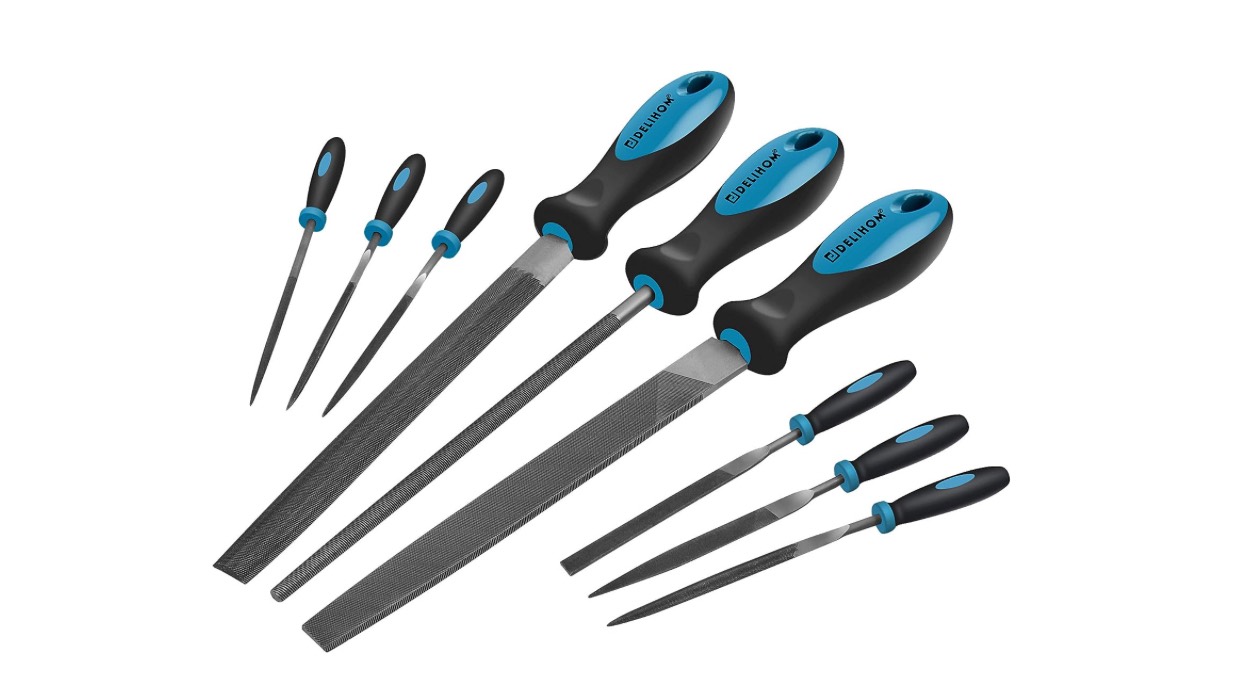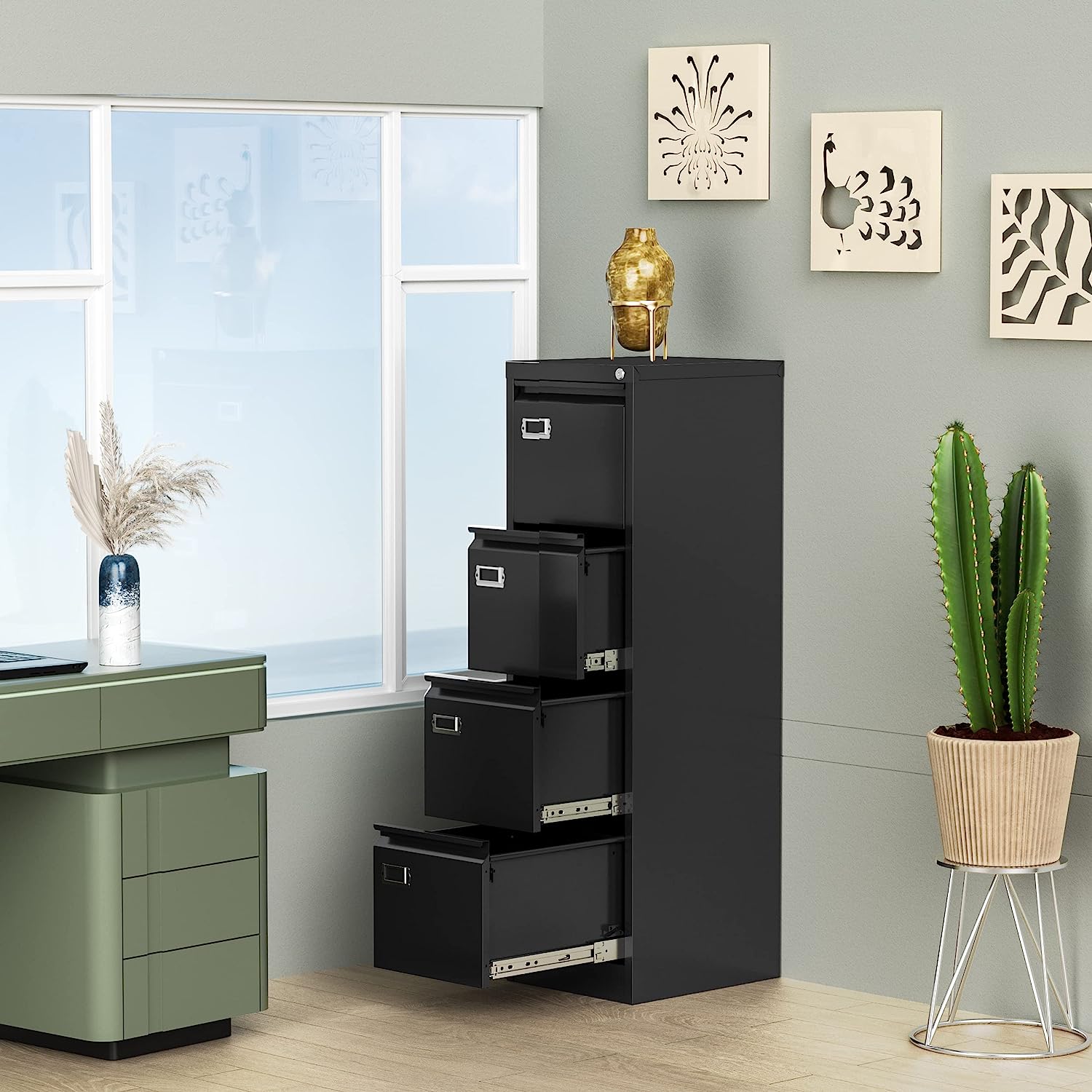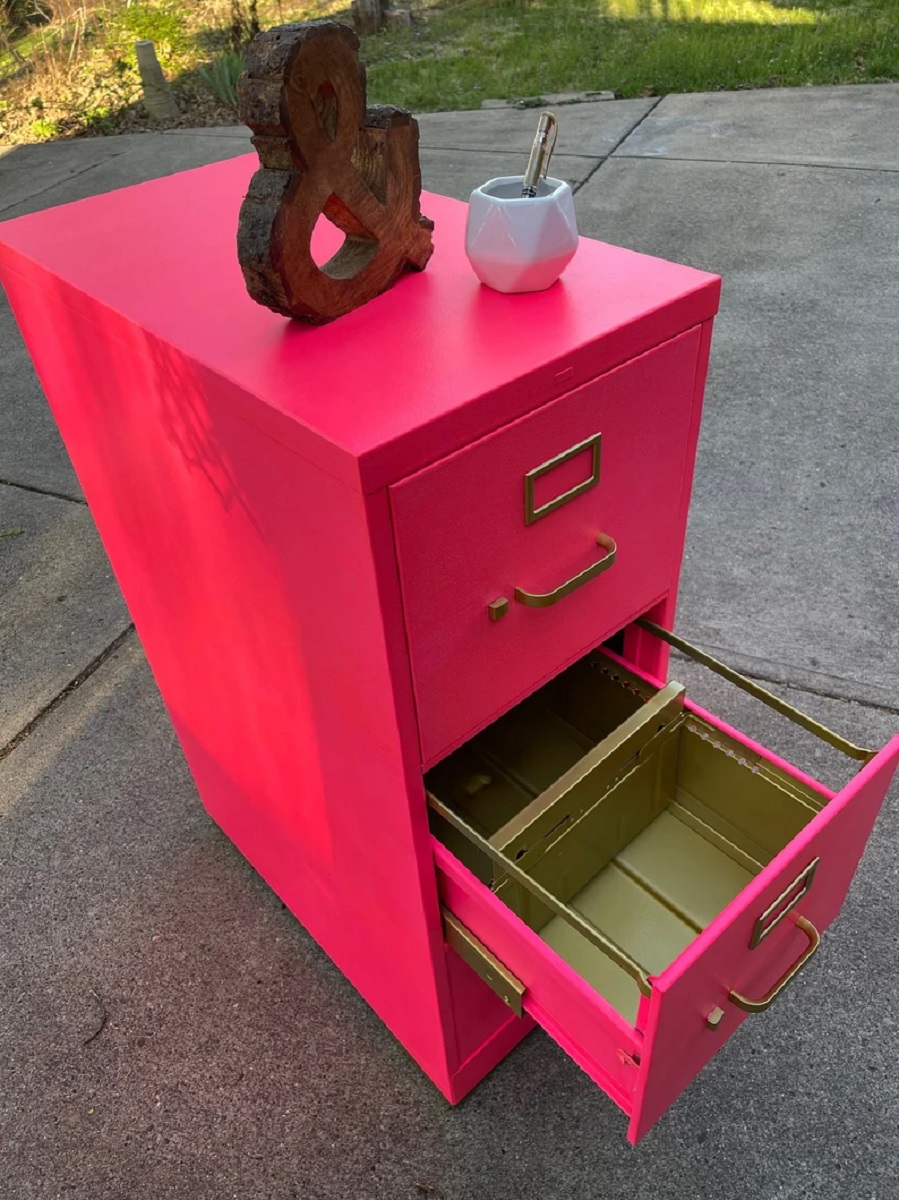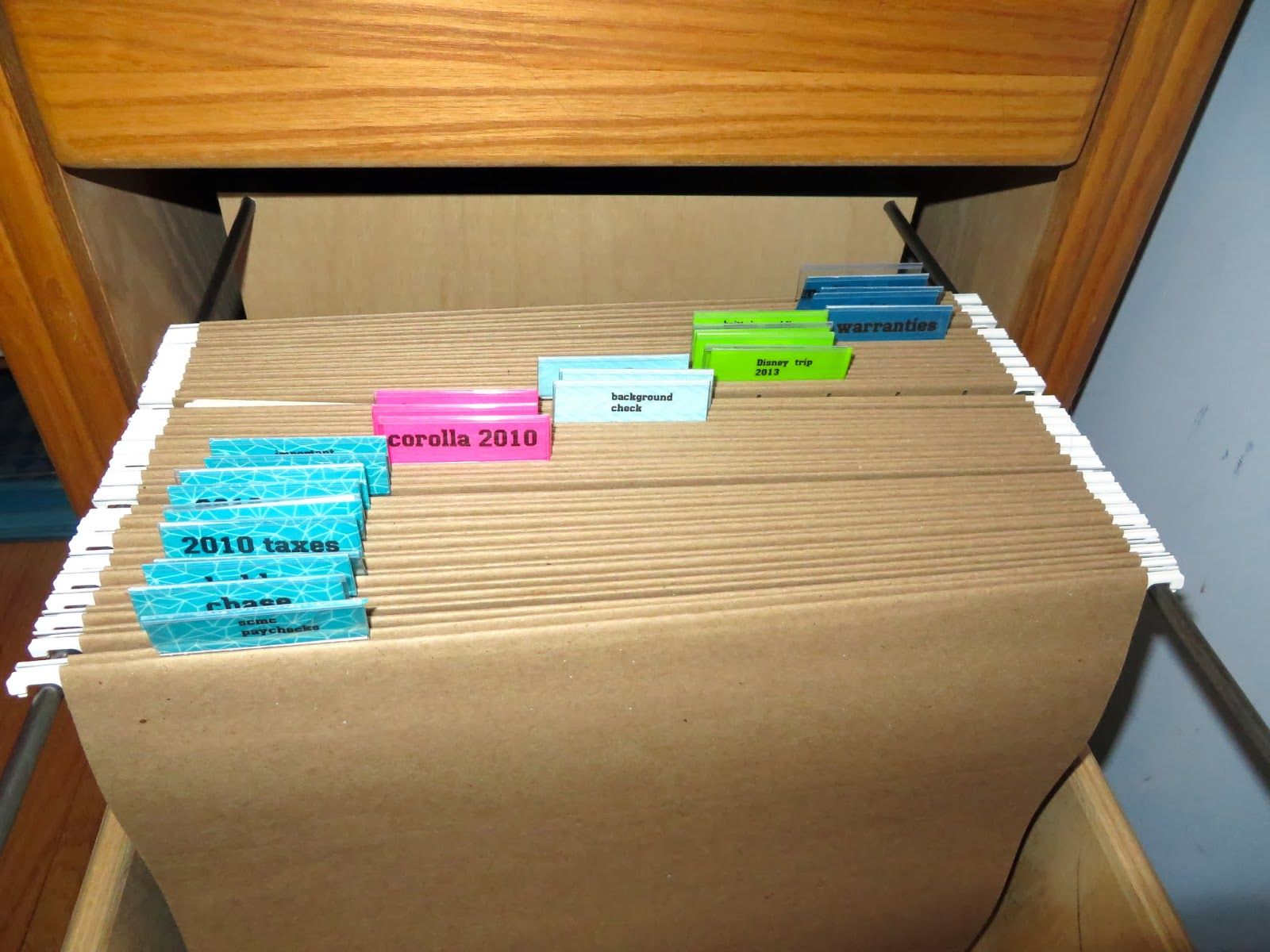

Articles
How To Store Metal Files
Modified: December 7, 2023
Learn the best techniques and tips for storing metal files with our informative articles. Keep your files organized and protected for long-lasting use.
(Many of the links in this article redirect to a specific reviewed product. Your purchase of these products through affiliate links helps to generate commission for Storables.com, at no extra cost. Learn more)
Introduction
Metal files are essential tools used in various industries for shaping, smoothing, and finishing metal surfaces. Whether you are a professional craftsman or a DIY enthusiast, proper storage and maintenance of your metal files are crucial to ensure their longevity and optimal performance. In this article, we will explore the importance of proper storage for metal files, common mistakes to avoid, tips for storing metal files, choosing the right storage solution, organizing metal files, and maintenance and care techniques. By following these guidelines, you can protect your investment and ensure that your metal files are always in excellent condition.
Key Takeaways:
- Proper storage, organization, and maintenance are crucial for extending the lifespan and performance of metal files. Investing in the right storage solution, implementing proper organization techniques, and staying diligent with maintenance will save time and money in the long run.
- By prioritizing proper storage, organization, and maintenance, metal files can be kept in excellent working condition, ensuring optimal performance for various tasks. Cleaning, storing in a dry environment, and regular maintenance are key to prolonging the lifespan of metal files.
Read more: How To Store Files
Importance of Proper Storage for Metal Files
Proper storage of your metal files is essential for several reasons. Firstly, it helps to prevent damage and maintain the sharpness of the file teeth. Metal files can easily become dull or bent if they are not stored correctly. By keeping them in a suitable storage solution, you can minimize the risk of accidental damage, such as dropping or banging against other tools or surfaces.
Secondly, proper storage reduces the chances of rust and corrosion. Metal files are susceptible to rust, especially when exposed to moisture or damp environments. Rust not only affects the performance of the file, but it can also stain the metal surface you are working on. By storing your metal files in a dry and controlled environment, you can significantly extend their lifespan and ensure that they are always ready for use.
Furthermore, proper storage helps to keep your workspace organized and efficient. When metal files are scattered or improperly stored, they can become a safety hazard. Imagine reaching into a drawer full of loose tools and accidentally getting cut by the sharp file teeth. By having a designated storage system in place, you can easily locate your files whenever you need them and minimize the risk of accidents.
Lastly, proper storage allows you to maximize the usable life of your metal files. When files are stored properly, they will require less frequent sharpening, reducing the amount of material that is removed from the file surface. This not only saves you time but also extends the life of the file, saving you money in the long run.
Now that we understand the importance of proper storage, let’s explore some common mistakes to avoid when it comes to storing metal files.
Common Mistakes to Avoid
When it comes to storing metal files, there are a few common mistakes that people often make. By being aware of these mistakes, you can avoid them and ensure that your metal files are properly stored and well-protected.
One of the most common mistakes is leaving metal files lying around on workbenches or other surfaces. This exposes them to the risk of being accidentally knocked off or damaged. Always make it a habit to return your metal files to their designated storage location after each use. This will help to keep them safe and prevent any unnecessary wear or damage.
Another mistake is storing metal files without any protection. Simply tossing them into a drawer or toolbox without any form of cushioning can lead to the file teeth becoming dull or bent. Invest in a proper storage solution, such as a tool roll or a file box, that provides individual compartments for each file and keeps them securely in place.
Many individuals also make the mistake of storing metal files in areas with excessive moisture or humidity. Metal files are highly susceptible to rust and corrosion when exposed to these conditions. Avoid storing them in basements, garages, or other areas prone to dampness. Instead, opt for a dry and controlled environment, ideally with low humidity levels.
Lastly, neglecting regular maintenance and cleaning is another common mistake. Metal files can accumulate debris, such as metal shavings or dirt, during use. If these particles are not removed, they can cause the file teeth to become clogged and less effective. After each use, make sure to clean your metal files thoroughly using a wire brush or a file card to remove any buildup.
By avoiding these common mistakes, you can ensure that your metal files remain in optimal condition and ready for use whenever you need them. Now, let’s explore some essential tips for properly storing your metal files.
Tips for Storing Metal Files
Proper storage of metal files is crucial for their longevity and performance. By following these tips, you can ensure that your metal files are well-protected and ready for use whenever you need them.
- Invest in a designated storage solution: Consider purchasing a tool roll, a file box, or a wall-mounted file rack to keep your metal files organized and secure. These storage solutions provide individual compartments or slots for each file, preventing them from rubbing against each other and causing damage.
- Use protective covers: If you prefer to store your metal files in a drawer or toolbox, make sure to use protective covers or sheaths to prevent them from scratching or damaging other tools or surfaces. You can find sheaths made of leather or plastic that are specifically designed for file protection.
- Label your storage: To ensure easy identification and accessibility, label your storage compartments or slots with the types or sizes of metal files they contain. This will save you time searching for a specific file and help maintain an organized workspace.
- Separate different file types: If you have multiple types of metal files, such as flat files, round files, or half-round files, it’s best to store them separately. This will prevent any confusion and ensure that you can quickly locate the file you need for a specific task.
- Keep files clean: Regular cleaning is essential to maintain the efficiency of your metal files. After each use, clean them thoroughly using a wire brush or a file card to remove any debris or buildup. This will help prevent the file teeth from clogging and ensure optimal performance.
- Avoid excessive vibration: Metal files are sensitive tools and can be damaged by excessive vibration. Store them in a location where they are less prone to being jostled or shaken. If you need to transport your metal files, make sure to secure them properly in a storage container or wrap them in a soft material to reduce the risk of damage.
- Control humidity levels: As mentioned earlier, moisture and humidity can lead to rust and corrosion. Store your metal files in a dry environment with low humidity levels to protect them from these damaging elements. Consider using moisture-absorbing products, such as silica gel packets, in your storage area.
By implementing these tips, you can ensure that your metal files are stored in a way that protects them from damage and preserves their sharpness and effectiveness. Next, let’s discuss how to choose the right storage solution for your metal files.
To store metal files, keep them in a dry place to prevent rusting. Store them in a tool chest or hang them on a pegboard to keep them organized and easily accessible.
Choosing the Right Storage Solution
When it comes to storing your metal files, selecting the right storage solution is crucial. Here are some factors to consider when choosing the appropriate storage solution for your metal files:
- Size and capacity: Determine the number of metal files you have and the space they require. Consider the future growth of your file collection as well. Choose a storage solution that can comfortably accommodate your current files and leave room for expansion.
- Protection: Look for a storage solution that provides adequate protection for your metal files. It should have compartments or slots that keep each file separate and prevent them from rubbing against each other, which can cause damage to the file teeth.
- Portability: If you require mobility for your metal files, consider a storage solution that is lightweight and easy to transport. Look for options with handles or straps that make carrying convenient.
- Durability: Metal files can be heavy and have sharp teeth. Therefore, opt for a storage solution made from durable materials that can withstand the weight and prevent any accidental punctures or tears.
- Visibility and accessibility: Choose a storage solution that allows you to easily identify and access your metal files. Transparent compartments or compartments with clear labels can save you time and effort when searching for a specific file.
- Stackability: If you have limited space, consider storage solutions that are stackable. This will help you maximize vertical space while keeping your metal files organized and easily accessible.
- Specialized options: Depending on your needs, there are specialized storage solutions available for specific types of metal files. For example, some storage options are designed to hold needle files or specific shapes like half-round or triangular files.
Remember to prioritize the protection, organization, and accessibility of your metal files when selecting a storage solution. Each individual’s needs may vary, so take the time to assess your requirements and choose accordingly. Now that we have discussed choosing the right storage solution, let’s move on to organizing your metal files.
Read more: How To Store Files In The Cloud
Organizing Metal Files
Proper organization of your metal files is key to maintaining an efficient and productive workspace. Here are some tips to help you organize your metal files effectively:
- Group by type: Group your metal files according to their types, such as flat files, round files, or needle files. This will make it easier to locate the specific file you need for a particular task.
- Arrange by size: Within each type, arrange your metal files by size, from smallest to largest. This ensures that you can quickly find the correct size file without wasting time searching through the entire collection.
- Use labels or color coding: To make identification even easier, consider using labels or color coding on the handles or storage compartments. This enables you to quickly identify the type or size of the file at a glance.
- Keep frequently used files within reach: Place your most commonly used metal files in a easily accessible location, such as a wall-mounted rack or a drawer near your workbench. This saves time by eliminating the need to search through your entire collection for frequently used files.
- Separate new and used files: If possible, keep your new and used metal files separate. This prevents contamination of new files with metal shavings or dirt from used files. You can use separate compartments or containers for this purpose.
- Regularly review and declutter: Periodically review your metal files collection. Discard any files that are damaged beyond repair or no longer serve your needs. This decluttering process keeps your collection organized and prevents overcrowding.
- Create a visual inventory: Consider creating a visual inventory or catalog of your metal files. This can be a simple spreadsheet or a photograph with labels. Having a visual representation of your collection helps you keep track of the files you have and identify any missing pieces.
By organizing your metal files in a systematic and logical manner, you can optimize efficiency and productivity in your workspace. Now, let’s move on to discussing the maintenance and care of your metal files.
Maintenance and Care of Metal Files
Proper maintenance and care of your metal files are crucial to ensure their longevity and optimal performance. Here are some essential tips to keep your metal files in excellent condition:
- Regular cleaning: After each use, make it a habit to clean your metal files thoroughly. Use a wire brush or a file card to remove any debris, metal shavings, or buildup from the file teeth. Regular cleaning prevents the file teeth from clogging, ensuring optimal performance.
- Oil and lubrication: Metal files can benefit from occasional oiling and lubrication to prevent rust and keep them in good working condition. Apply a small amount of lubricant, such as machine oil or silicone spray, to the file teeth and joints. Wipe off any excess oil before storing the files to prevent any transfer onto other surfaces.
- Avoid excessive heat: Metal files should be kept away from excessive heat sources, such as direct sunlight or heat vents. High temperatures can cause the file teeth to lose their hardness and become less effective. Store your metal files in a cool and dry location.
- Avoid excessive pressure: When using your metal files, apply steady and even pressure to maintain the integrity of the file teeth. Excessive pressure can cause the teeth to become dull or break. Let the file do the work rather than applying excessive force.
- Store in a dry environment: As mentioned earlier, moisture and humidity can lead to rust and corrosion. Store your metal files in a dry environment with low humidity levels. Consider using moisture-absorbing products, such as silica gel packets, in your storage area to further protect your files.
- Inspect for damage: Regularly inspect your metal files for any signs of damage or wear. Look for bent teeth, chips, or cracks. If you discover any damage, it is best to replace the file rather than continuing to use it. Using a damaged file can affect the quality of your work and potentially cause accidents.
- Sharpen when necessary: Over time, the file teeth can become dull and less effective. When you notice a decrease in the file’s cutting ability, it’s time to sharpen it. Use a file brush or a sharpening stone to restore the sharpness of the teeth. Follow the manufacturer’s instructions or seek guidance from a professional if you are unsure.
By implementing these maintenance and care techniques, you can prolong the lifespan of your metal files and ensure their optimal performance for various tasks. Now, let’s conclude our discussion.
Conclusion
Proper storage, organization, and maintenance of metal files are essential for their longevity and optimal performance. By following the guidelines outlined in this article, you can protect your investment and ensure that your metal files are always in excellent condition.
We discussed the importance of proper storage, including avoiding common mistakes such as leaving files lying around, storing without protection, exposing to moisture, and neglecting regular maintenance. We also provided tips for storing metal files, including investing in a designated storage solution, using protective covers, labeling storage compartments, and controlling humidity levels.
Furthermore, we emphasized the significance of choosing the right storage solution, considering factors such as size and capacity, protection, portability, durability, visibility, and stackability. Organizing metal files by grouping them by type and size, using labels or color coding, and keeping frequently used files within reach are practical organizational tips we covered.
To ensure the longevity of metal files, we discussed the importance of regular cleaning, oiling and lubrication, avoiding excessive heat and pressure, storing in a dry environment, inspecting for damage, and sharpening when necessary. These maintenance and care techniques will help keep your metal files in excellent working condition.
In conclusion, by prioritizing proper storage, organization, and maintenance, you can prolong the lifespan of your metal files and ensure their optimal performance. Taking the time to invest in the right storage solution, implementing proper organization techniques, and staying diligent with maintenance will pay off in the long run, saving you both time and money.
So, next time you are done using your metal files, make sure to clean them, store them properly, and keep them in a dry and controlled environment. Your metal files will serve you well for many projects to come.
Frequently Asked Questions about How To Store Metal Files
Was this page helpful?
At Storables.com, we guarantee accurate and reliable information. Our content, validated by Expert Board Contributors, is crafted following stringent Editorial Policies. We're committed to providing you with well-researched, expert-backed insights for all your informational needs.















0 thoughts on “How To Store Metal Files”